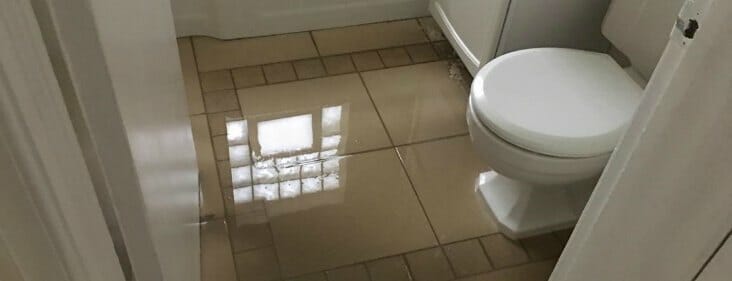The Causes of Water Harm in the Bathroom
The Causes of Water Harm in the Bathroom
Blog Article
We've stumbled upon this great article about How to Repair and Prevent Bathroom Water Damage? listed below on the web and figured it made perfect sense to talk about it with you over here.

Water damage commonly happens in the bathroom because of the water used daily. Occasionally, the damages could be a little mold and mildew from the shower. Other times, it's massive damages on your floor. Whatever it is, it is always great to know the reason and stop it before it occurs.
This overview will experience a few of the usual root causes of water damage in the bathroom. We will additionally examine what you can do to avoid these reasons from damaging your shower room. Allow's dive in.
These are the common reasons you would have water damage in your washrooms and how you can identify them:
Excess Wetness
It's cool to have that long shower and sprinkle water while you dance around and also act like you're performing, however sometimes these acts could trigger water damage to your shower room.
Spraying water around can create water to head to edges and also develop molds. Enjoy how you spread out excess dampness around, as well as when you do it, clean it up to prevent damage.
Splits in your wall ceramic tiles
Shower room wall surface tiles have actually been specifically made for that purpose. They safeguard the wall surface from dampness from people taking showers. However, they are not undestroyable.
Sometimes, your shower room wall surface tiles split and allow some dampness to seep right into the wall. This might potentially ruin the wall surface if you do not take any action. If you see a crack on your wall floor tiles, fix it quickly. Don't wait until it ruins your wall surface.
Overruning commodes and also sinks
As humans, often we make errors that might trigger some water damage in the shower room. As an example, leaving your sink faucet on might trigger overflowing and damages to various other parts of the shower room with moisture.
Likewise, a damaged toilet could trigger overflowing. For instance, a busted toilet handle or other parts of the cistern. When this occurs, it can damage the flooring.
As quickly as you discover an overruning sink or commode, call a plumbing to help handle it right away.
Ruptured or Dripping Pipes
There are many pipelines carrying water to different parts of your bathroom. Some pipes take water to the commode, the sink, the taps, the shower, and also many other areas. They crisscross the tiny area of the restroom.
From time to time, these pipelines could get rustic and also ruptured. Various other times, human activity could cause them to leak. When this occurs, you'll locate water in the edges of your bathroom or on the wall.
To find this, watch out for bubbling walls, molds, or mold. Call a specialist emergency situation plumbing professional to repair this when it occurs.
Roofing system Leaks
Often, the trouble of water damage to the washroom may not come from the restroom. As an example, a roofing leakage could trigger damages to the shower room ceiling. You can identify the damage done by taking a look at the water stains on the ceiling.
If you find water spots on your ceiling, check the roofing system to see if it's damaged. After that, call a specialist to aid address the problem.
Verdict
Water damage to your washroom can be annoying. Nonetheless, you can handle it if you stop some of the reasons mentioned in this overview. Call an expert emergency situation plumbing technician if you see any kind of severe damages.
How to Repair a Water-Damaged Wall in the Bathroom
All you need to know to repair bathroom wall water damage – from identifying the water source to finishing the repair professionally. If you don’t act quickly to resolve a water damage problem, you could find that it develops into a mold issue and/or cause structural damage to your home. Follow this guide to repair your bathroom before it's too late.
All you need to know to repair bathroom wall water damage
Water damage is a common household problem, and one that, if left unrepaired, can quickly lead to structural problems and health issues. The two most likely rooms where water damage may occur is the bathroom and the kitchen – where water is used often and there is high humidity.
What is water damage?
It is easy to think of water damage as caused by a flood or leaking tap or burst water pipe. However, when water damage is assessed, there are three main categories into which water falls (as classified by the American National Standards Institute). These categories are defined as:
Category 1 Water – ‘Clear Water’
This is sanitary water. There is usually no major threat to health by washing with this water, drinking it, or inhaling if it is streaming. Most water that enters your home will be category 1 water, while most water leaving your home will be either category 2 or 3 water. It may also come from melting snow, rainwater and water tanks.
Damage caused by this type of water can usually be repaired or restored, though this doesn’t mean that there are no potential health issues.
Category 2 Water – ‘Grey Water’
This is contaminated water – sometimes considerably so – and will cause illness if consumed or if it comes into contact with your skin. Water damage in this category is often caused by overflows from toilet bowls, and damage to washing machines and dishwashers. While damaged items might still be repaired or restored after damage by grey water, it is more difficult and more expensive to do so.
If the water damage in your home has been caused by grey water, it is advisable to have repairs made by professionals.
Over time, grey water will deteriorate and become black water.
Category 3 Water – ‘Black Water’
Category 3 water, also known as black water, is highly contaminated and a great risk to health. This may contain raw sewage, heavy metals, and other toxic substances. It will smell terrible.
If this is the water that has caused damage in your bathroom, do not touch it. Stop the water flowing if possible, seal the room and call the experts: it really isn’t worth the risk of ill health and disease that could be fatal. It is very unlikely that items can be repaired or restored if they have been damaged by black water.
https://www.porterscleaning.com/blog/how-to-repair-a-water-damaged-wall-in-the-bathroom/

I'm certainly very taken with How to Repair and Prevent Bathroom Water Damage? and I'm hoping you enjoyed reading the post. Sharing is nice. Helping others is fun. We recognize the value of reading our article about How to Repair and Prevent Bathroom Water Damage?.
Prompt service? Call here. Report this page